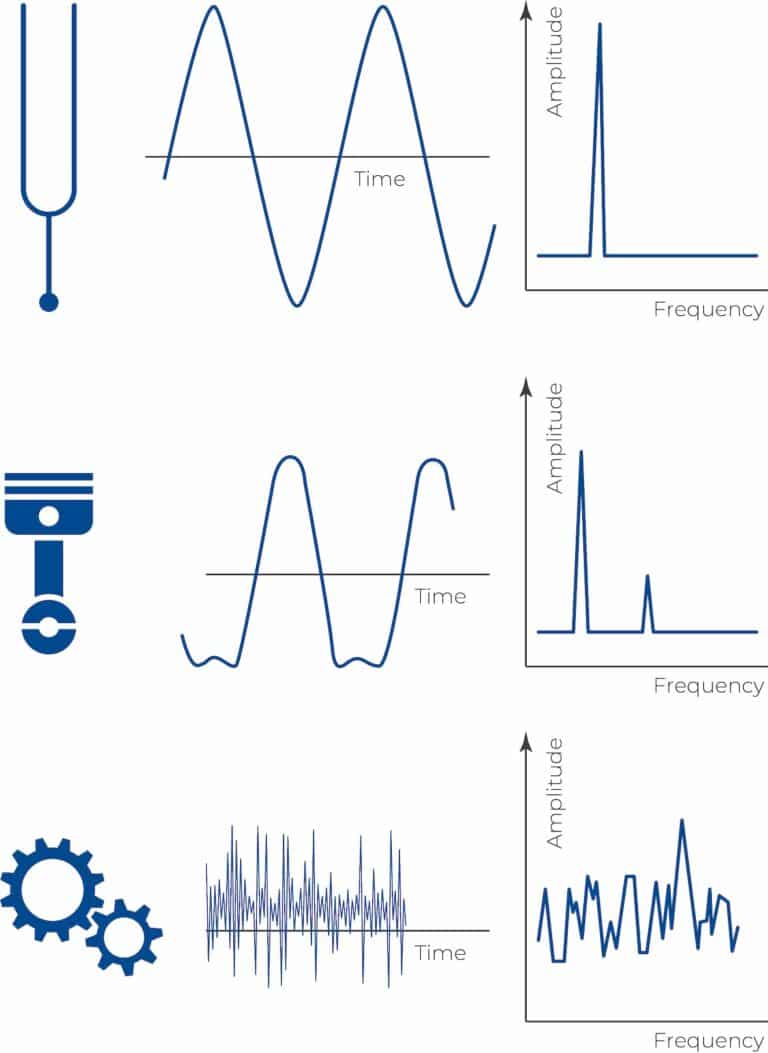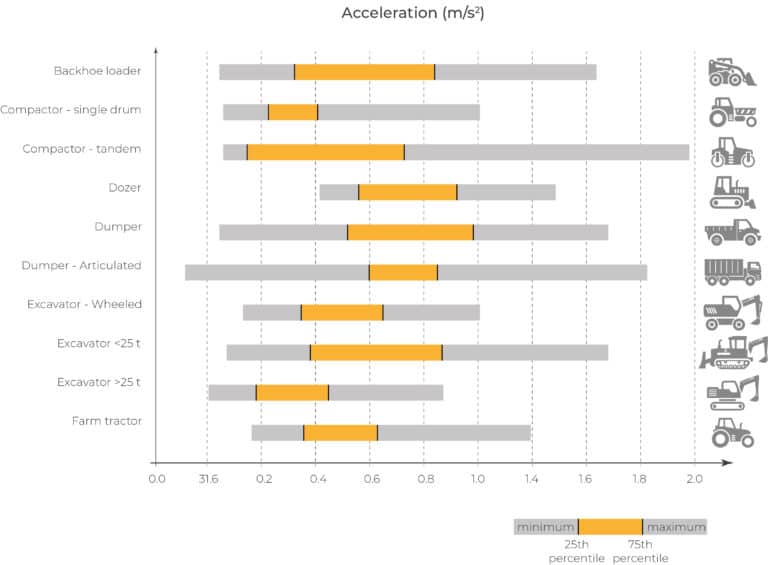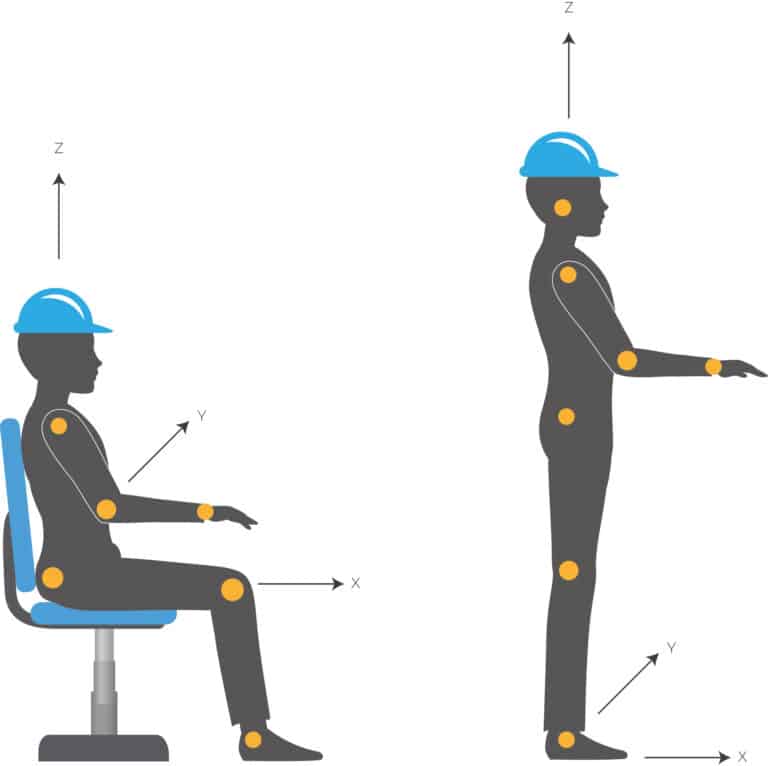Whole-body vibrations are mechanical vibrations that enter the human body in the frequency range of 0.1 to 80 Hz.
A typical source of whole-body vibrations is vehicles, where vibrations are transferred to the human body via seats or floors. The whole-body vibration is a possible health hazard, especially after prolonged exposure.
In this article, you will learn what exactly whole-body vibrations are, how to measure them, and what the limits are for evaluation.
Whole body vibration (WBV) is caused by workplace machines and vehicles and is transmitted to the human body through the seat or floor. Exposure to whole-body vibration may cause health problems. For example, exposure to high shocks may cause back injuries for a seating person or knee injuries for a standing one. The risks are rising with higher vibration magnitudes and prolonged exposure times. The effective way to prevent whole-body vibration risk at work is the identification of vibration sources by measurements.

Vibration is an oscillating motion around a reference position. Usually, vibration is expressed in units of magnitude (m/s2) and frequency (Hz). In machines, vibrations are generated by numerous internal components that move or rotate at various frequencies at the same time.
A vibration measurement enables the plot of the vibration amplitude vs. frequency and can be used to identify these components. In practice, a frequency spectrogram is used to display the vibration level as a function of frequency.
In machine vibration measurements, frequency analysis enables finding the cause of unwanted vibration. In whole-body vibration, frequency weighting filters are applied to a vibration signal to emphasize frequencies that are particularly harmful to the human body.
Whole-body vibration exposure is common in professions like transportation, construction, quarrying, or agriculture. The most prominent examples of sources are off-road vehicles, jet boats, helicopters, and jets. Often the standing operators are also affected by whole-body vibrations transmitted from heavy machinery via floors.
The graph below shows typical vibration acceleration values that are generated by moving vehicles:

The Control of Vibration at Work Regulations 2005 set rules to reduce the risks of whole-body vibration. After the Regulations were introduced, businesses had a legal requirement to protect workers from the dangers of whole-body vibration.
To reduce the risk of exposure, the regulations established whole-body vibration limits:

To calculate the daily vibration exposure (A(8)) two values are needed: the vibration magnitude and the duration of time in which the person is exposed to vibration. Unless the vibration measurement covers the entire working day, the exposure duration time is usually assessed in interviews with workers and their supervisors.
The whole-body vibration magnitude (aw) is obtained with measurements. The aw value is the frequency-weighted acceleration measured in three directions (axes X, Y, Z). As the horizontal vibrations are more harmful, two lateral axes X and Y directions are multiplied by 1.4. For the vertical, z-axis vibration the factor is 1.0. To obtain the A(8) vibration exposure the highest aw of three orthogonal axes (1.4awx, 1.4awy, or awz) is selected.
To obtain the A(8) the maximum weighted vibration magnitude of three axes is multiplied by the square root of the exposure duration time divided by the reference time of 8-hours following the formula is used:
A(8)= awmax*√(Te/T8)
According to BS ISO 2631-1, the measurement time of whole-body vibration should cover the representative working period. In practice, the measurement covers the total time of each task in which the worker is exposed to vibrations.
The British standard BS EN 14253:2003, suggests making at least 2 hours of measurements, but preferred half or full working day measurements, if possible. In case longer measurements are not possible, 20-minute intervals are suggested as a minimum.
During the measurement, the aw (in m/s2) is assessed. The aw is a root-mean-square (r.m.s) vibration magnitude expressed in terms of the frequency-weighted acceleration at the seat of a seated person or the feet of a standing person.
Similarly to other vibration measurements, whole-body vibration measurements are also subject to evaluation uncertainty. In order to minimize uncertainty, it is important to perform the in-situ calibration with a vibration calibrator.
Human vibration meter is a dedicated instrument to measure daily exposure to vibration, which may be assessed using either or both of the two exposure measures:
Both measures are dependent on a measured vibration value. Additionally, the A(8) requires an exposure time. The daily vibration exposure is measured in metres per second squared (m/s2), much like the vibration magnitude. If the VDV is measured over a measurement period that is shorter than the full working day (as it usually will be), then the resulting measurement will need to be scaled up.
Whole-body vibration measuring equipment should comply with the BS EN ISO 8041-1:2017 specifications for whole-body vibration measuring instruments.

SVANTEK SV 106D – Human Vibration Meter & Analyser